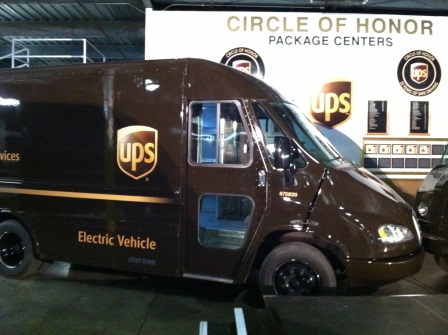Amazon’s Drone: Missing the Forest for the Trees (assuming it misses the trees first, of course)
We have the tech savvy to build state of the art vehicles, transit, rail, roads and vehicle management systems and to innovate in city planning and logistics in ways that could slash congestion and routinely enable ultra-rapid people andpackage delivery.
The following blog is written by Zoe Lipman, Senior Policy Advisor for the BlueGreen Alliance.
Amazon’s video last week of a package delivery drone spurred a great deal of chatter about the technological, regulatory and… um… arboreal obstacles to the deployment of a swarm of commercial delivery drones.
When I watched the video, I’ll admit my first thought was the same as the rest of twitter, “What could possibly go wrong?! My Fail Glee changed quickly to head scratching, however: “Well, it is electrification of goods movement, but…” and a certain unease that if we’re going for the robots because we can’t figure out how to fix the roads or the traffic, we may not be so happy with what we end up with.

UPS recently deployed one of the largest fleets of all electric vehicles, adding 100 US-manufactured electric delivery trucks to its California routes. Photo credit: CALSTART
Don’t get me wrong, I’m all for the right robot in the right place, and transportation disruption will come in all sorts of forms. Also, I’m not known for ordering things online in a timely manner.
Still, I’m a bit concerned that it seems more feasible to send out the latest version of Call of Duty in its own little EV helicopter than to modernize our transportation infrastructure to a level that routinely supports competitive global commerce.
We have the tech savvy to build state of the art vehicles, transit, rail, roads and vehicle management systems and to innovate in city planning and logistics in ways that could slash congestion and routinely enable ultra-rapid people andpackage delivery. This tech is also radical but, I’d guess, systemically much more efficient than a swarm of flying workarounds to 1970’s era infrastructure.
It’s time we got excited about the political and financing innovation that could solve these urgent infrastructure and investment challenges and could transform and uplift the whole economy—with big positive impacts on business and consumer costs, employment, and quality of life.
We’ll have that chance in coming months as we get ready to debate the national Transportation Bill that will fund future surface transportation infrastructure, consider bills like the National Infrastructure Development Bank Act, and make transportation investments at the state and city level. Right now we’re struggling to get bridges repaired, but the time is right to go much further and faster.
As one Twitter commenter put it: “@Amazon, I would like to order my own drone but have it delivered by UPS. Possible?” With cutting edge transportation systems and infrastructure: Optimal.